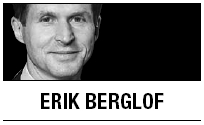LONDON ― After the 1997-98 financial crisis, policymakers in Asia’s major emerging markets ― South Korea, Thailand, Malaysia, and even Indonesia ― vowed “never again” to be humiliated by international capital markets. They set out to address the structural weaknesses that had brought their systems down.

Many countries in emerging Europe had similar near-death experiences in the recent global crisis. Thanks to international and national policy interventions, their currencies and banking systems were saved from collapse, but many of them saw massive output drops and soaring unemployment. Unfortunately, they have not to the same extent embraced their Asian counterparts’ determination to address the vulnerabilities.
Following the Asian crisis, the region’s economies underwent intense internal and external scrutiny. It was clear that they had become more vulnerable due to loss of competitiveness, weak governance, and lack of transparency. Badly regulated banking sectors, feeble market structures and weak competition, as well as trade and current-account restrictions, were also among the shortcomings identified. Not all Asian countries walked the line to the same extent, and some opportunities for reform were undoubtedly lost, but important lessons were learned and institutions improved.
Similarly, emerging economies in Latin America changed their economic-policy course after devastating crises ― in some cases a series of them ― and moved toward strengthening monetary frameworks to reduce dollarization and build local capital markets, liberalize markets, and improve governance. These measures contributed to the improved economic fundamentals that helped limit the impact of the global financial crisis.
The countries of emerging Europe must go through a similar bout of introspection, but the fact that they were saved from worst-case scenarios seems to make it more difficult to launch this process. The region needs to find its way back not only to rapid growth, but also to safer, more sustainable growth.
In the decade leading up to the crisis, the emerging European economies were remarkably successful. Many of them grew at rates that compared favorably to other emerging markets, if not to China. In terms of exports, they did almost as well as, and in some respects even surpassed, the Chinese.
But it was clear even before the crisis that emerging Europe was losing many of the strengths that explained its success. Labor costs grew much faster than for most competitors. In Latvia, for example, unit labor costs grew 10 times faster than in the United States from 2001-08. Similarly, the potential gains from improved trade arrangements were being exhausted as they joined the European Union. Looking ahead, the region’s main export markets, primarily in advanced Europe, are not expected to grow as fast as in the past.
Moreover, the region had relied excessively on foreign savings to support growth, with many countries running large long-term current-account deficits. A significant part was financed by non-debt-creating inflows of foreign direct investment, but external borrowing, particularly by the private sector, also grew very rapidly. Foreign financing fueled foreign-currency credit growth, even for borrowers without foreign-currency income. As a result, the exchange-rate risk was passed on to those least able to manage it: households. And banks were saddled with large exposures.
As wages grew faster than productivity in the run-up to the crisis, competitiveness also suffered, and domestic demand became the main engine of growth. Easy access to cheap funding and high commodity prices alleviated the need to press ahead with difficult reforms of infrastructure, utilities, education, and health care, to name a few areas. Diversification of production took a back seat in policy decisions as commodity prices continued to fuel rapid growth.
Emerging Europe needs new sources of competitiveness. There are still important gains to be had from further improvements in the broader business environment. A large-scale survey of business managers, reported in this year’s EBRD Transition Report, reveals grave concerns with the availability of skilled labor, the predictability and transparency of taxation and corruption.
There are no shortcuts to progress on addressing these problems, but lessons from the region should inspire emulation. Some countries, like Hungary, have managed to sustain the quality of education, critical for long-term competitiveness. Estonia has shown the way towards a simplified tax administration, modeled on the Scandinavian experience. Georgia has managed to reduce low-level corruption radically, through deep staff cuts, improved compensation to remaining government employees, and stiffer penalties for bribery.
Emerging Europe’s fundamental growth model is sound. If these economies introduce the necessary reforms, they will improve their potential growth. Equally important, they will create the buffers needed to offset external shocks and, as in emerging Asia and Latin America, to implement countercyclical policies that contain the extent and costs of future systemic crises.
By Erik Berglof
Erik Berglof is the chief economist at the European Bank for Reconstruction and Development. ― Ed.
(Project Syndicate)


![[Herald Interview] 'Korea, don't repeat Hong Kong's mistakes on foreign caregivers'](http://res.heraldm.com/phpwas/restmb_idxmake.php?idx=644&simg=/content/image/2024/11/13/20241113050481_0.jpg)

![[KH Explains] Why Yoon golfing is so controversial](http://res.heraldm.com/phpwas/restmb_idxmake.php?idx=644&simg=/content/image/2024/11/13/20241113050608_0.jpg)



